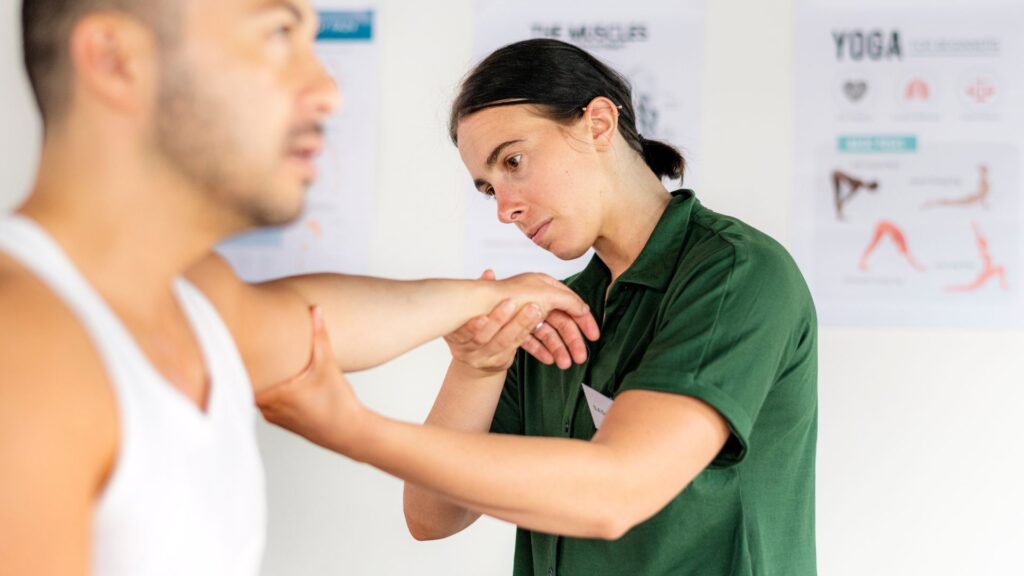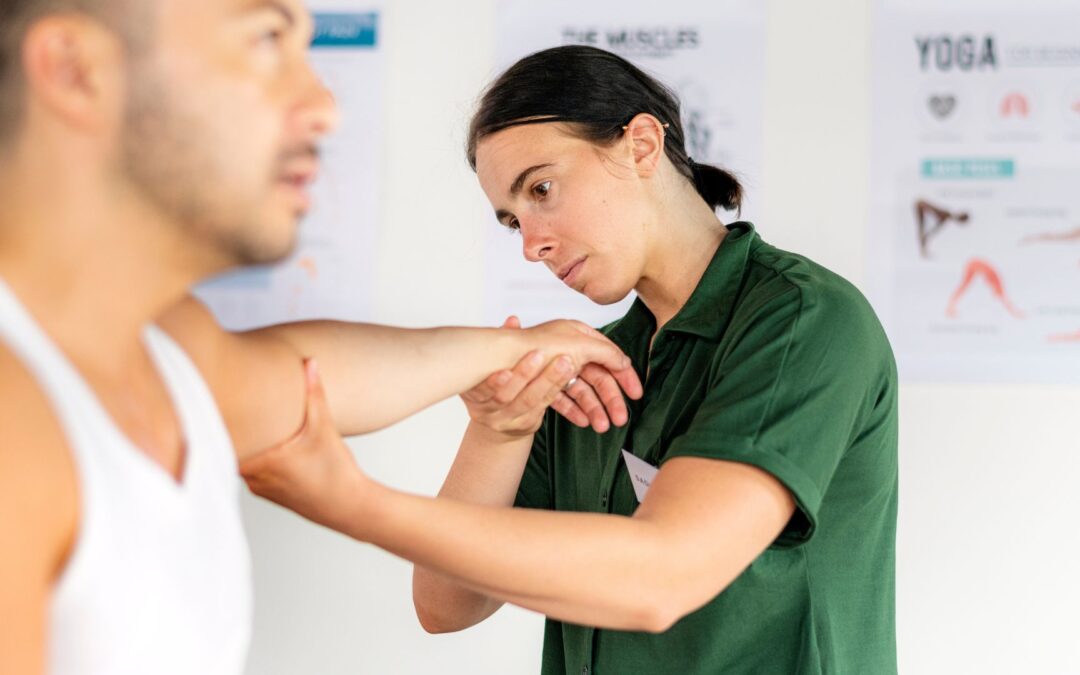
If you’ve ever felt a sharp ache or dull tension between your shoulder blades, you’re not alone. Shoulder blade pain is one of the most common complaints we see at Family Chiropractic of Clark. The pain can range from mild discomfort to a nagging ache that makes daily activities—like sitting at your desk, driving, or even sleeping—much harder.
The good news? Most cases of shoulder blade pain come from muscle tension, posture problems, or spinal misalignments, and there are simple stretches and chiropractic solutions that can bring relief.
Common Causes of Shoulder Blade Pain
1. Poor Posture
Spending hours hunched over a computer or phone places constant stress on the muscles between your shoulder blades. Over time, this leads to tightness, fatigue, and pain.
2. Muscle Strain
Lifting something awkwardly, overdoing it at the gym, or even repetitive movements (like carrying a heavy bag) can strain the muscles in your upper back.
3. Spinal Misalignments
When vertebrae in the thoracic or cervical spine are out of alignment, they can irritate nerves and cause pain that radiates around the shoulder blades.
4. Stress and Tension
Emotional stress often shows up physically in the shoulders and upper back, creating a feeling of knots or tight bands between the blades.
5. Less Common But Serious Causes
Sometimes, shoulder blade pain may signal underlying issues such as gallbladder conditions, heart problems, or lung concerns. These are far less common, but persistent or unusual pain should always be evaluated by a professional.
Easy Stretches for Shoulder Blade Pain
These chiropractor-approved stretches can help release tension and improve mobility in the upper back and shoulders. Always move gently and stop if you feel sharp pain.
1. Upper Back Stretch
- Sit tall in a chair.
- Clasp your hands together and extend your arms forward at chest height.
- Round your upper back, pushing your hands away from your chest.
- Hold for 20–30 seconds.
2. Shoulder Blade Squeeze
- Sit or stand with your arms at your sides.
- Gently squeeze your shoulder blades together as if trying to hold a pencil between them.
- Hold for 5 seconds, repeat 10 times.
3. Cross-Body Arm Stretch
- Bring one arm across your chest.
- Use your opposite hand to gently press your arm closer to your body.
- Hold for 20–30 seconds, switch sides.
4. Neck and Upper Trap Stretch
- Sit upright and tilt your head gently toward one shoulder.
- Use your hand to add light pressure for a deeper stretch.
- Hold for 15–20 seconds each side.
5. Wall Angels
- Stand with your back against a wall, feet a few inches away.
- Raise your arms to a “goalpost” position with elbows bent at 90 degrees.
- Slowly move your arms up and down, like making a snow angel.
- Repeat 8–10 times.
How Chiropractic Care Helps Shoulder Blade Pain
At Family Chiropractic of Clark, we don’t just treat the pain — we identify and correct the underlying cause. Chiropractic care may include:
- Spinal adjustments to restore proper alignment and relieve nerve pressure.
- Soft tissue work to relax tight muscles around the shoulder blades.
- Postural coaching to prevent pain from returning.
- Home exercise recommendations tailored to your lifestyle and needs.
By addressing both spinal and muscular imbalances, chiropractic care helps provide lasting relief rather than just a temporary fix.
When to See a Chiropractor
You should schedule a visit if your shoulder blade pain is:
- Lasting more than a few days despite rest and stretching
- Accompanied by numbness, tingling, or weakness in the arms
- Worsening with activity or posture changes
- Interfering with your work, sleep, or daily life

Final Thoughts
Shoulder blade pain is frustrating, but with the right care, it’s often simple to resolve. Gentle stretches, better posture habits, and chiropractic adjustments can make a big difference in how your shoulders and upper back feel every day.
👉 If shoulder blade pain is slowing you down, don’t wait. Schedule your appointment at Family Chiropractic of Clark and let’s create a personalized plan to help you move freely and comfortably again.
